#5 Defending – What should be your strategy in position at 3-bet pot?

1. 3-betting ranges – IP
Let's see the simplest scenario, we play from either MP, CO, or the BTN, and we face an open raise. (We discuss BBvSB play since range differences can cause major shifts in strategy).
The first thing you should remember is to avoid cold calling. The reason is two-fold; first, the pot gets raked when a flop is dealt. I cannot highlight enough that you must avoid any such situation on micro and small stakes because the rake is so high. The second reason is that you should simplify your strategy as much as possible. Basically, there is no EV difference playing a mixed or a pure 3-bet-only strategy (if you use the correct ranges). Had you played a mixed strategy, you should cold call with strong hands like aces (which prefer to build the pot and push other opponents out from the pot). Then you already need to create two strategy branches from the beginning, causing massive confusion to a beginner. Besides that, there is a bigger chance that you have to play a multiway pot, meaning that EQ divides between more players. Moreover, it will take a lot more effort to realize your EQ.
So to put it short: don't cold call in position. You might see strategies that mix on the BTN (and only there) since they'll always play in position post-flop, but you'll need a good reason to do that. This reason is mainly that a recreational is involved; either he is the opener (or already cold-called a bet), or there is at least one in the blinds.
2. What ranges should you 3-bet?
First of all, it is very dependent on your opponent. Based on the opening charts and bet sizes discussed in earlier articles, I will share the ranges with you. If your opponent deviates from it, so should you. Adjusting is key; the narrower the opening range, the tighter you should defend. The more they fold against a 3-bet, the wider you should attack them, and so on.
In position, we tend to use linear ranges. It means we use the top x percent of our hands. For example, to a 2,5bb open, we can 3-bet somewhere between 3x-3,5x. In the examples, we use 8,5bb 3-bet vs. 2,5bb open.
MP
From MP, we calculate to face around a 17% opening range. Our hands of choice should dominate that, so for sure, we'll have a tighter range;
JJ+ - is a no brainer
AKo, AQo, KQo, Ajs+, and KJs+ - are always good candidates dominating and playing well against the majority of the UTG raise first in range.
Other hands are good enough to 3-bet, but to avoid being overly aggressive, we sometimes need to let them go. So I suggest playing this hands somewhere between 10-50%:
66-TT, KTs, ATs, A2-A5s
This way, you'll have decent board coverage as well:
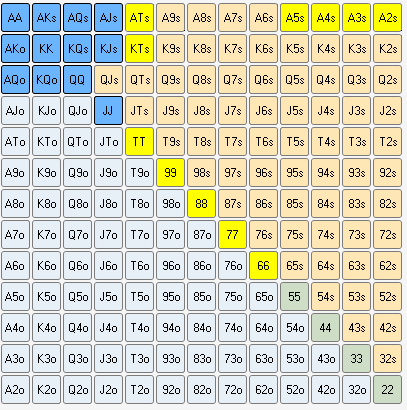
MP vs. UTG open ~8%; Blue – 100% 3-bet; yellow – 10-50% 3-bet; The rest is fold.
CO
We can face a UTG open and an MP open from the CO. In the first case, I suggest the same range as above. You might go slightly wider like the yellow marked 20-60%, or even always 3-betting A5-A3s.
Against the MP, we can go ahead and 3-bet around 10%. Then, we can add hands like AJo, Ats, A5s-A3s to the always 3-bet part and increase the frequency of hands like Kjo, QJs, KTs, A2s, and TT up to 50-80%. Or, if you want to simplify, stick to the 10-50%, including the pocket pairs 66-99.
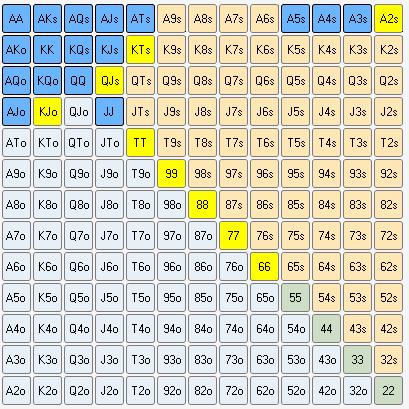
CO vs. MP open ~10%; Blue – 100% 3-bet; yellow – 10-50% 3-bet; The rest is fold.
BTN
We are going to use the broadest ranges from the BTN. Against the UTG open, somewhere around 8-10%, which looks very similar to the previous vs. UTG ranges:
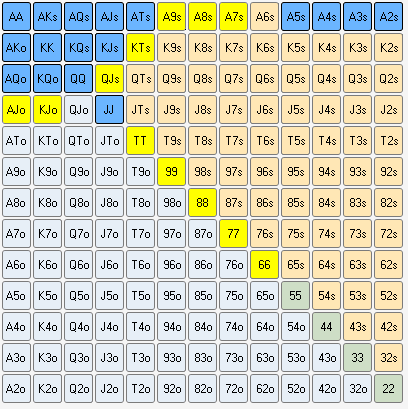
BTN vs. UTG open ~8-10%; Blue – 100% 3-bet; yellow – 10-50% 3-bet; The rest is fold.
Against MP, we'll use a 10-11% range, constructed the same linear way, adding more frequency to hands from the discussed ranges. We may introduce hands like ATo, 54s, 65s, and 76s in a low frequency.
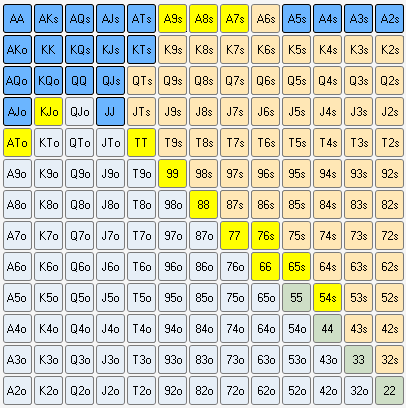
BTN vs. MP open ~10-11%; Blue – 100% 3-bet; yellow – 10-50% 3-bet; The rest is fold.
And last but not least, BTN vs. CO open, where we widen our range up to 14-15%. We can go as wild as using all the suited broadways, almost all of the Axs combos, using ATo and KJo, K9s, and 99-TT as pure 3-bet.

BTN vs. CO open ~14-15%; Blue – 100% 3-bet; yellow – 10-50% 3-bet; The rest is fold.
Summary
The main takeaway is to avoid cold calling when you face an open raise in position. Always focus on your opponent's opening range and size and use your base ranges accordingly. Adjusting is essential; tighten up if they play tighter or "go crazy" if they overfold to 3-bets. Cold calling a 3-bet is not advised, but some small-stakes or recreational players might do. In this case, you should be careful to keep your range narrow enough since the bluff part of your range will have to face some post-flop plays we should have calculated with.

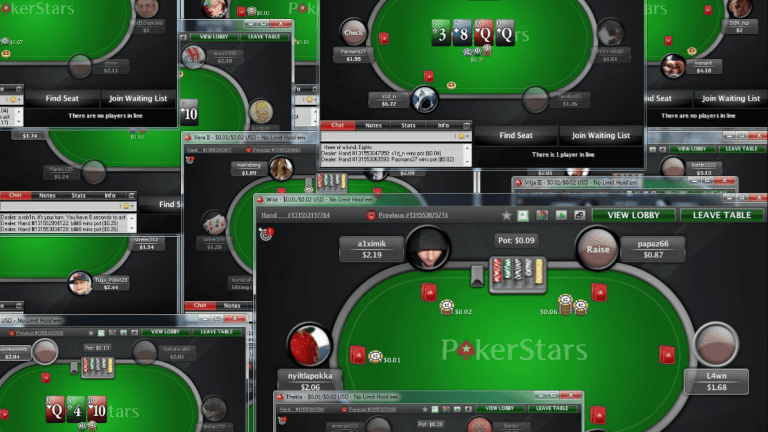
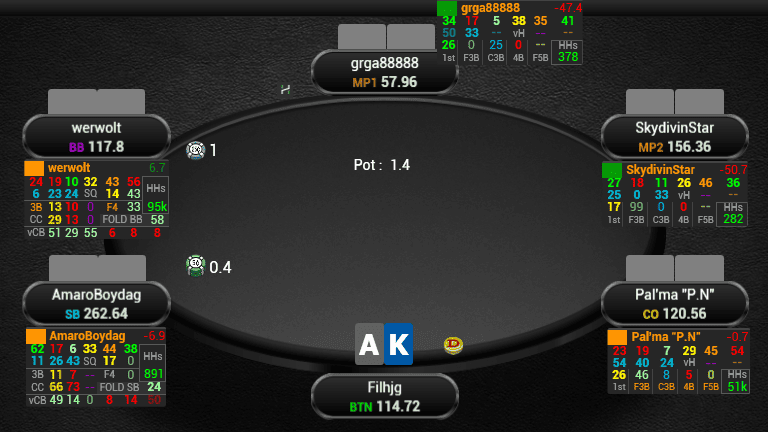

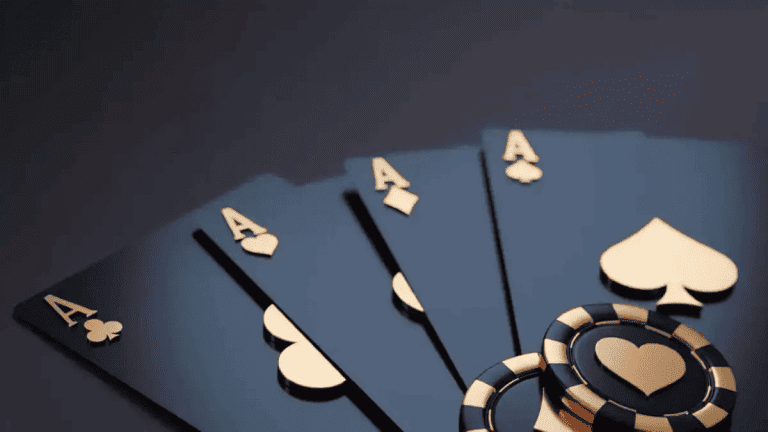










0 comments